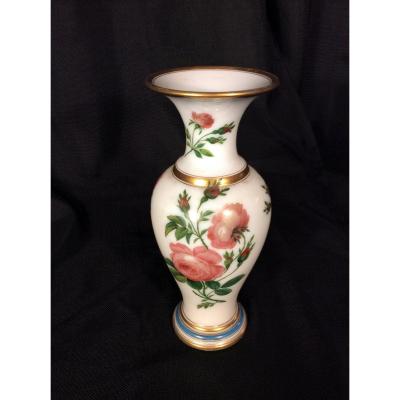Superb and important Louis XV chest of drawers with two drawers in Coromandel lacquer veneer.
Palace scene decor and black lacquer.
It opens with 2 drawers without crosspiece and stands on curved legs.
Beautiful ornamentation of chiseled and gilded bronzes in the rococo style.
Portor marble top, repaired (almost invisible restoration)
Parisian work from a large workshop.
2nd part of the 19th century
H.: 93 cm, L.: 155 cm, D.: 68 cm
Created from the 17th century in China, the name of the so-called "Coromandel" lacquers was given by the English after the name of the eastern coast of India where the lacquers were loaded on the ships of the Compagnie des Indes in order to to be exported to Europe. These lacquers enjoyed a certain success in Europe in the 17th and 18th centuries, particularly in the form of cabinets or large screens that could reach impressive dimensions. Arrived in Europe, some of these creations were dismembered in order to adorn chests of drawers and other furniture.
The Coromandel lacquer technique, which was made directly in China, consists of covering the wood with a fine fabric held in place by a coating of vegetable glue. The lacquer was then applied in successive layers. The decoration is finally painted and surrounded by deep incisions.
With the success of Coromandel lacquer, European craftsmen tried to recreate this technique in their workshops. This is how "Vernis Martin" was born, developed by the Martin Brothers in 1728 in Paris. Varnish less expensive than real lacquers from China or Japan, Vernis Martin was widely used by cabinetmakers for decorating furniture and chests of drawers, especially on curved parts (lacquers cannot stand being too rounded).
















































 Le Magazine de PROANTIC
Le Magazine de PROANTIC TRÉSORS Magazine
TRÉSORS Magazine Rivista Artiquariato
Rivista Artiquariato